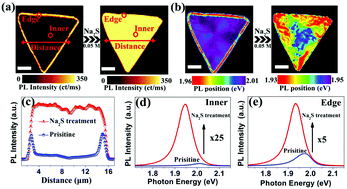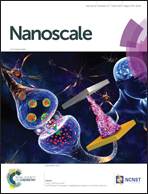Significant photoluminescence enhancement in WS2 monolayers through Na2S treatment†
Abstract
Tungsten disulfide monolayers have attracted extensive attention in nanoelectronics and optoelectronics applications due to their remarkable electronic and optical properties. High-quality WS2 monolayers with a scalable size and uniform thickness can be synthesized by a chemical vapor deposition method (CVD). However, they commonly contain intrinsic structural defects and different populations of charge carriers, which are responsible for different contributions of excitons, trions, and biexcitons to their photoluminescence (PL) emission. Here, we adopt sodium sulphide (Na2S) solution to chemically treat CVD-grown WS2 monolayers by a simple immersing method. The results show that WS2 monolayers have a significantly enhanced PL emission by a factor of 25-fold and an obvious red-shift of the PL wavelength, resulting from the different excitonic states induced by effective n-type doping after Na2S treatment. This work provides a simple but promising chemical doping route to significantly improve the optical properties of WS2 monolayers and paves the way for the realization of practical WS2 monolayer based optoelectronic applications.



 Please wait while we load your content...
Please wait while we load your content...